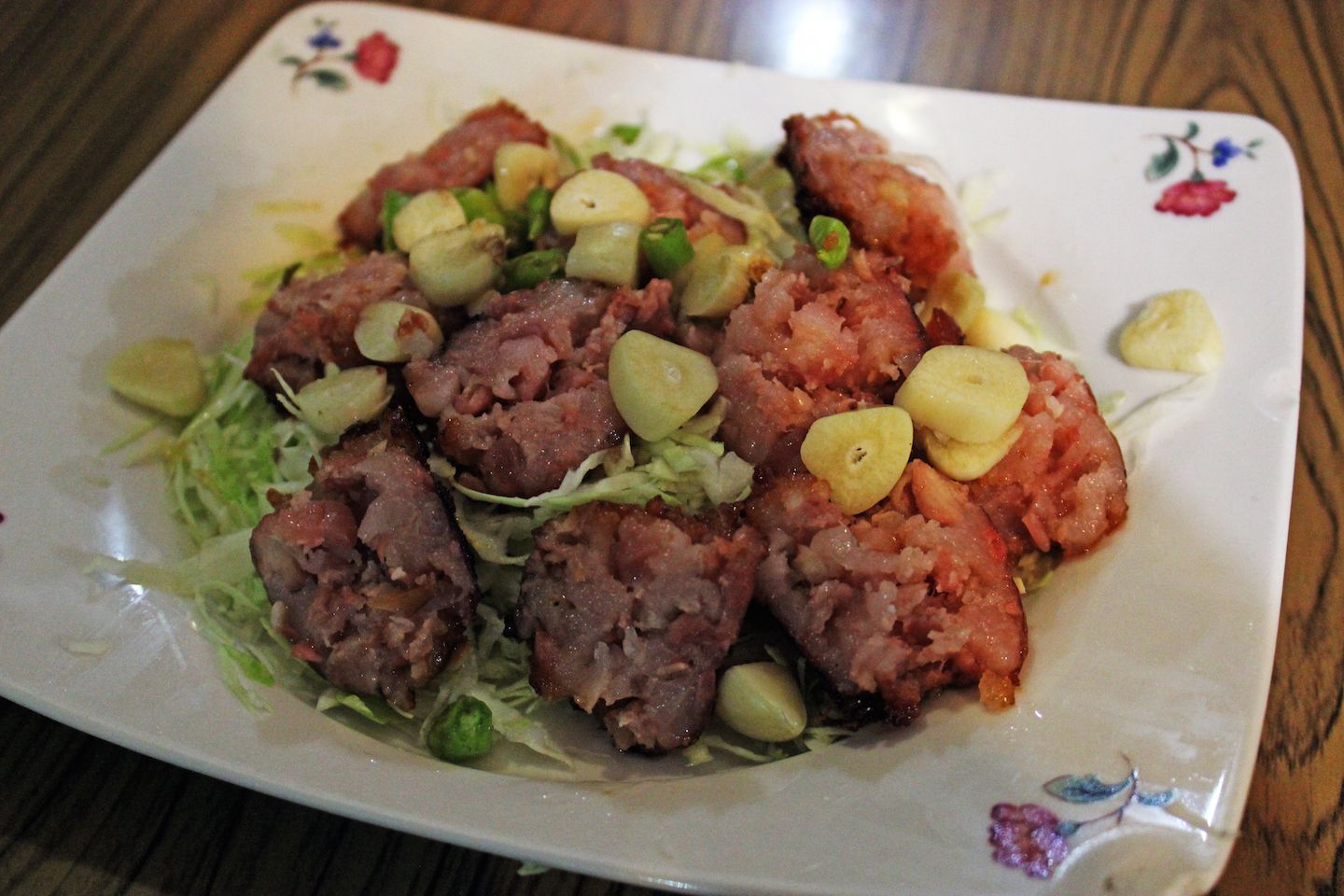Lao food was reminiscent of Khmer food in the sense that neither are culinary giants by any means, especially compared to other SE Asian foods such as Thai or Vietnamese. Besides a few well-known dishes, we primarily ate Lao-versions of Thai, Chinese, or Western dishes. Here are a few unique foods we did try.
Laap
Laap was one of the most popular Lao dishes offered in most restaurants. It’s basically fried ground meat with any combination of herbs, greens, and spices. The dish usually primarily contained meat (always a plus), but this did saturate the palate pretty quickly. Laap tended to be spicy, and more often than not served with our choice of steamed or sticky rice.

Whenever we felt like having some Lao food, laap was the ultimate go-to for a flavourful and filling meal.
Lao Sausage
When I think of sausage dishes, I think of a German bratwurst served with sauerkraut, or an American hot dog, or a sausage served on a stick as a snack, or dried Chinese sausages used as a meat component of a bigger dish. Lao sausage was unlike any of these. Made out of fatty pork with herbs and spices, they were always grilled fresh on the spot, cut into pieces and served. On its own, as its own dish. Unabashedly.

It was very simple, but enjoyable. It’s hard to mess up a sausage, and I liked that it was a little bit spicy. We usually ordered some sticky rice on the side to eat with – there was no meal more hearty.
Sticky Rice
While sticky rice exists throughout Asia, it is considered the staple food of Laos. The Lao people eat more sticky rice than any other people in the world and they often refer to themselves as “descendants of sticky rice.” Whenever we ordered some, it always came in a bamboo container without fail. Meant to be eaten by hand, sticky rice was usually a side accompaniment, such as to laap or Lao sausages.

Traditionally, I am not a fan of sticky rice. I grew up exclusively eating steamed rice, plus I tend to avoid sticky foods (consequence of having braces once upon a time?). However, I admit that sticky rice grew on me. It wasn’t as sticky as the ones usually used in desserts, and it went well with other Lao dishes. Plus there was something quite satisfying about stuffing a bunch of rice so easily into my mouth – usually chopsticks can only gather small amounts of steamed rice, sometimes even grain by grain.
Beerlao
It’s so interesting to me that in these otherwise underdeveloped countries where a good percentage of the population lacks basic amenities and lives below the poverty line, there is always a national beer. I wouldn’t consider beer such a high priority on a national level, but I can understand the motivation from a business perspective. Plus as a foreigner, it’s nice to enjoy the local setting with a local beer. Beerlao was just like Angkor in Cambodia, except essentially without competition.

We probably drank Beerlaos more often than we probably realized, but it was pretty tasty. Another option at restaurants was Namkhong beer, which usually sold for less, but tasted noticeably worse than Beerlao. In one of our frequented restaurants in Luang Prabang, the “Specials” menu items came with a small Beerlao bottle that was by far the cutest beer bottle I had ever seen – small, short and chubby. If there was one thing in Laos that you could count on, it was the presence of Beerlao everywhere.
Over the duration of our time in Laos, we ate almost exclusively in restaurants as well as more Western food than we would have liked. Street food was almost the same price with questionable sanitary conditions. Every restaurant offered the same Lao, Thai, and Western food items (some with good portions, some with tiny portions). Snacks were very expensive, so we stuck to eating main meals. All of this reminded us so much of our time eating in Cambodia. What little Lao food we did eat, however, we enjoyed.

